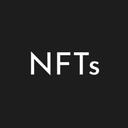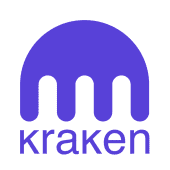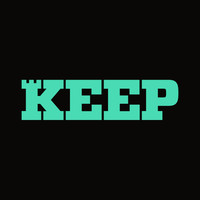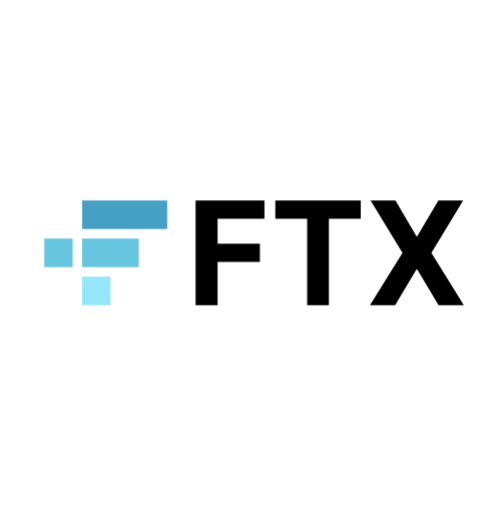

[Recap] OFR Talk #16 - Ultimate #SAFU Crypto Wallet Guide After the FTX crash
🎙Recording https://twitter.com/i/spaces/1BRJjZaadQQJw
Follow us on Twitter
OFR Intern @ofr_intern https://twitter.com/ofr_intern
Old Fashion Research @ofrfund https://twitter.com/ofrfund
OFRTalk is a Twitter Space series supported by Old Fashion Research. Its vision is to become a community-oriented open interview, bringing audience sharing of each sector of the crypto industry from different angles, as well as in-depth blockchain content research, project dialogues under its investment, and discussions on hot topics, to help everyone develop a deeper understanding of the industry.
All contents of OFRTalk only represent the opinions of individuals and guests. The contents sometimes include the introduction of our investment projects, which do not constitute any investment advice. Please follow OFR Intern and OFR’s official Twitter to get the updated information in time.
Guests
JX, Partner @OFRfund // @jx_block
Veronica Wong, CEO & Cofounder @iSafePal // @V_SafePal
Wei Zhou, CEO @coinsph // @thedaoofwei
Lee Hsuan, CEO & Co-founder @BloctoApp // @hleetw
Minh, Head of Growth @coin98_wallet // @hominh95
Time & Date
Wednesday, Nov 16 @1:30 pm UTC
—————————————————————————————————————————
Host: It’s been a crazy week. What’s your take on the FTX “bank run”? Do you think it’s good for your business? Any significant growth in your user base recently?
Veronica: We’ve seen crazy growth recently and the traction is roughly 10x. We’re seeing a crazily high conversion that is basically one of the top levels compared to last year in the bull market. It’s surprisingly good but also quite sad to see that because it was not until this moment that people are losing money that they finally learned the lesson of why decentralization and owning their money matters.
Partially it’s good for our business, and for everybody who joins tonight’s chat. It’s also good for other exchanges and decentralized platforms like DEXes and wallets. But overall for the industry, it’s quite bad because people outside the ecosystem are losing faith and confidence. And there will be a painful cleansing process of the market right now. Good thing is that the silver line is we are going to see more transparency and decentralized focus and narrative on the market, which is great and what it was meant for. It’s a double-sided thing here. Overall, it’s crazy. Until this moment we just launched a campaign like 2 min ago for this specifically because we want to bring some light and confidence in. We want to encourage the new crypto users to gain their confidence back by walking them through the decentralized journey.
Minh: We do see quite a significant growth in the active user base. It definitely happens especially when people are trying to withdraw from centralized exchanges like FTX to non-custodial wallets like us. This may have a negative impact on the industry, but in the long run, we have a positive effect. It will help drive the industry forward with transparency and we view this as DeFi’s endgame. This is how we see it. As for the token price, for us as builders it’s fun to see the price going up and down, but the price shouldn’t be one thing that we care about right now. We should focus more on serving the users which have been increasing a lot lately.
Wei: Historically, most of the assets in the crypto space stayed on regulated exchanges. On the left hand, we have regulated exchanges like Coinbase and Kraken in the U.S that are leading the way. On the other hand, we have decentralized wallets whose custodies are looking at the users and are acting on the interface, with MetaMask and so on. Most assets sat in the middle, in the gray area. The gray area has a lot of mishaps and criminal activities that have occurred.
Right now, from the user’s perspective, both the institutional users and individual or retail users, start to move their assets to both sides of the equation. I don’t think the Philippines is a country that has been impacted that much by FTX recently, compared to some of the more developed countries where their messages in their region are probably bigger.
Holistically, we’ve seen people moving their assets either to regulated businesses, where we have clear regulations on how assets are custodied. We also see assets moving to the decentralized world. We originally have the assets in the middle, but now they are dispersing onto the two sides. This trend will continue.
Hsuan: For this particular incident, we’re sitting on the sideline because Blockto is more for using applications than trading. Our users focus more on playing games, using social apps, and NFTs. These are not the most affected people in this incident. But we do see quite some growth in assets stored with us.
We’re afraid that at least the short-term impact or mid-term impact will be negative towards the market in general, especially on their perception of crypto and blockchain. The industry spent quite some time building up trust in these newer kinds of assets. Now, everyone including my family members is asking me if my business was affected or not. If they have read about the incident, which I’m sure that many of the population have, it’s hurting the trust in the space quite a lot. It will take some time for us to rebuild trust again and get more users into crypto and blockchain.
Host: The FTX crash has rung an alert on the non-transparency and insecurity of all centralized trading platforms. What would be a more secure and practical way for each investor to store their crypto assets?
Minh: Most of the non-custodial wallets have definitely been the hot topic recently due to this incident. We can see people guiding the users to withdraw their funds to non-custodial wallets. There is also a trade-off. It can be quite technical for the new users since they might not know about the seed phrase, the keys, etc. We have to strongly focus on user education right now, along with telling them that they should be using wallets. Maybe they want to do this but it’s too much for them. Once you get through non-custodial wallets, I would definitely suggest you use a hardware wallet, like Ledger and Trezor. If you’re using such wallets already, it’s much better in security. By then, you can just use the hardware wallet to connect with any hot wallet as a UI. That will be the best and most secure way I can think of right now if you don’t want to store your funds on a centralized exchange.
I only put my holdings in a hardware wallet, while all my regular assets are in a hot wallet. Before, I put them on an exchange, too. It depends on what type of user you are.
JX: I don’t use hardware that often but I do recommend everybody use one instead of a hot wallet. Only put those valuable assets in your hardware wallet or cold wallet. I’m expecting a better solution, being either regulated or abstract account dual, etc.
Hsuan: I do use a hardware wallet. I stored the majority of my assets or the assets I don’t really have to use every day, like NFTs and other FTs. But I do have a portion of assets stored in hot wallets, and a smaller portion in exchanges. Personally, I don’t trade much. The time I put assets into exchanges is when I want to withdraw my bank. Although we’re focusing more on newbie users, in our App and newsletters, we always educate users that once they have more assets stored in your Blockto wallet, you might need to look into hardware wallet solutions, like Ledger, Trezor, and SafePal. If you are storing a large amount of assets, hardware wallets are definitely the way to go.
Veronica: The majority is still using hot wallets and mobile wallets. Right now, we serve three types of wallets already so we do have a sense of the metrics and geo-distribution. The majority is still using mobile wallets while hardware wallets roughly take up 20-30% of the user base. The geo-distribution of users is quite different and interesting. For example, most of the hardware wallet users are from North America and Europe, whereas users from Southeast Asia favor mobile wallets. Probably they need more flexibility in investing in DeFi or participating in GameFi. We’re seeing different behavior models, and overall as a complete user base like mobile wallets still would be the majority. It’s indeed more convenient to use.
But recently, we are seeing booming sales volume conversion for our hardware wallets. It might be that all of a sudden people realize that it’s quite important to have their physical devices storing a large amount of assets in an offline manner. It’s an educational process honestly. Ever since day 1 in 2018, there was a very small proportion of OG who were using hardware wallets and now it’s becoming a standardized accessory for more people. That’s also the reason why we try to build the most affordable wallets for the crypto users, because we want to make it a standardized accessory for everyone to hold crypto on a daily basis.
Host: When it comes to wallet creation, memorizing and storing seed phrases has been a headache for many users. What’s your thought on this? Are there any easier ways to generate or recover a wallet without using a seed phrase?
Veronica: Right now, there is some new technology that we are looking into. For example, private key sharding and NPC, so that we can do social recovery for the users, and also account abstract as part of the technical elements here. The whole idea is to try to separate your private key into different pieces and store one piece of them on a centralized server, such as connected to your Google or Facebook account so that you can recover a piece of it and then you can shadow or stimulate the signing process of your transaction. You can set up a different logic to authorize different transactions. The overall concept is like this.
But for now, it’s not massively adopted yet. The seed phrase model is still the most popular thing of all crypto wallets that are being used. Honestly, for onboarding purposes, it’s 100% terrible. I taught so many of my friends that have been using wallets already and some of them are very smart people working in big tech companies, and they can’t really figure out how to use them properly. The onboarding process is a pain point. I believe in the future that seed phrases are going to be killed, and there will be a way better solution to address the issue. There are also a lot of other products or projects, or even GameFi and Metaverse projects are also trying to eliminate the onboarding hurdle of so-called private keys and seed phrases, to make the Web3 experience as seamless and smooth as Web2 products. This would be the next touch point if we are to see the bull market coming. The next bull market will be surrounded by applications and attracting the next generation of internet users into the space.
Minh: There are definitely options like NPC wallets or smart contract wallets. Again, it’s coming back to the trade-off that I mentioned before, between security and convenience. It depends on what type of user you are and you have to choose based on that. Some wallets out there are tightly focusing on NFTs. They started out as a smart contract wallet and the users don’t have to care about seed phrases where they can use social recovery, etc. It’s a good way to import more users for sure. But then again it depends on what type of user you are.
Hsuan: We are aiming to build an experience for both of the guests described. We’re a smart contract wallet and provide a mixed custodial solution. We guide the users in a more step-by-step approach. We think this is the onboarding journey that makes more sense. When users just started, since they don’t have any assets in their wallet yet, they might not need to worry that much about whether they are holding private keys themselves. They don’t have the incentive or the need to actually do that. If you’re forcing users to do that since day 1 then they might just quit and decide not to use blockchain-based applications again.
We think the journey should start with a more lightweight custodial experience. Once users accumulate more assets in their wallets, they might start to learn more about blockchain and holding their own keys. They should then have the option to switch to a non-custodial experience. With smart contract wallets, you can achieve that, to replace the ownership from the key you manage for them with the key that they generate locally in a similar way as Metamask. Or they can even use their hardware wallets to manage the original smart contract wallet we created for them. From our perspective, this is a more complete journey and step-by-step approach to getting more users on board. Other approaches like multi-party computation or social recovery are the things that we should definitely look into to get this experience as secure and robust. People don’t really need to worry about losing all their assets if they lose their seed phrases.
Wei: Wallet is going to be the next big investment space. For us, we’re actually exploring the possibility of embedding a decentralized wallet within decentralized access. If we look at the Philippines specifically, it hasn’t been impacted that much by the FTX incident like it’s not a very wealthy country. A lot of the user balances are just not that much. What happened in this situation is that the whales got hit because everybody uses FTX as a crypto bank. That’s the biggest use case for Binance as well.
The biggest takeaway here is that you shouldn’t trust a crypto bank if it’s unregulated. When you’re signing in your users’ terms of use with us, this is an entity that is regulated by a central bank or in different countries such as Singapore. There is recourse. As users of FTX, you realize that they’re signing entities in Antigua. As a user, you have no recourse in terms of going after that entity on your own. That’s the balance that wallets have to figure out how to have a good user experience, but also ensure safety at the same time. For new users who actually don’t have that many assets or they’re just coming in to play games and earn, there’s actually safety and ease of use. A smooth onboarding experience is much more important than just full-on hardcore NPC security and safety. For larger types of assets, where you do actually want custody, there are a lot of unique solutions. I think the subset of users is probably smaller. That’s the fastest growing segment because people realize the importance. This is my second big cycle, and every cycle the usage of decentralized wallets grew because people lost their assets in these offshore centralized businesses. That balance is something that we as builders or entrepreneurs have to figure out, like what’s our target market, and how do we go after them. For Coins, we have to make it easy for you to get into crypto and get out of crypto from a fiat perspective. We’re building products that actually allow you to spend your crypto in the real world. PH is one of the few countries where you can actually just seamlessly move money from your wallets into Coins and purchase crypto. With the ease of use, for larger users with larger amounts of money, we’ll manage them because we have custody and we are a custody provider.
JX: I believe the account abstract could offer a process for keeping the assets safe. For account abstraction, it’s more like the next generation of smart contracts. But basically, you have a lot of advantages like you can restore your password and you can enable any social recovery. Providing this kind of experience seamlessly is very close to what Web2 applications do. But the technology infrastructure is not mature yet, we may need a lot of work.
Secondly, it requires a lot of gas costs. Nothing is without cost, for AA, it sacrifices its cost-effectiveness, but provides a more user-friendly experience. I’m pretty bullish in this direction, but I also believe that different users will prefer different hierarchies or priorities on how they preserve their assets. Centralized ones, especially the regulated ones, have some advantages over the user experience and customer services. For the decentralized or the wallet ones, there’s a lot of room to improve. If the decentralized wallets can seamlessly be touched base with dApps and payment, I’m really looking forward to seeing that crypto wallets can be massively adopted.
Usually, there are three levels that you have to sacrifice the ease of use of security, such as the seed words, you have to write it down and keep it somewhere, for example, a bank. It eventually goes back to the trust of centralized banks again with bankless crypto.
Host: Some crypto wallets have integrated into CEX’s liquidity using APIs. Are there any security concerns if users connect their self-owned crypto wallets to trade at a centralized exchange?
Minh: API is used for showing the balance, none of them are being used for the centralized exchange query. If you have a hot wallet and you also have your funds on a CEX, it will be easier to have both joined balances right into one place. We don’t have or integrate any of the API that is going to be used on the liquidity side. We see it as risky. But then I believe that some other wallets have this and it’s actually convenient for such types of users as traders.
Veronica: SafePal is the first crypto wallet building the Binance trading experience in the wallet but in a very interesting way. If you are a Binance KYC user, you can connect your KYC’d Binance accounts with the Binance mini-program inside the wallet, and then you can start trading. All the terms of service and uses would follow binance.com’s services, so there will be countries that are restricted from the usage. We strictly follow Binance’s compliance process.
The reason why we built it is simply because people need it. It’s hard to say which one is 100% better than the other because we are seeing users having different behaviors in using these products. Some of them favor the convenience of CEX, and some of them favor the freedom and transparency of DEX. We just want to build something that people want and use, and build them in a nice way that before they use it they are fully aware of the potential risks and gains. We are very careful of the onboarding process, so we have some compulsory steps to make sure that every user who is trying to use this feature is fully aware of the potential risks and terms of use of these platforms and products. And they have to fully understand that. We are even designing some onboarding quizzes to make sure the users can fully digest and understand these details and situations.
With the careful onboarding process users completed, they would like to use it as we offer it. SafePal is purely based on this product philosophy that we build what people need that we grow into a larger scale community nowadays. We build the way they find most convenient and we are trying to move all the roadblocks in front of the onboarding process. We have fiat un-ramp, aggregating several service providers. We have built aggregated cross-chain swaps which aggregate the CEX and DEX routers so people get to choose whichever channel they would like to complete the swap order. We have aggregated earn as people can straight yield in the wallet. We built a lot of these things to make wallets gradually become the entrance of the universe and they find different purposes and utilities among them. We want to build this into a super portal where everybody gets a chance to get a taste of the decentralized economy, while not sacrificing or compromising the ease of use of the crypto itself.
Host: Do you think wallet providers should cover the loss if users’ assets are stolen/hacked?
** Veronica: **This is a BlackBox. Binance has a SAFU fund. We’ve talked about whether SafePal should have a similar SAFU fund to cover people’s potential loss. But then the question becomes very hard to know whether people losing their money was due to the wallet providers. Because based on our daily user query, according to our customer support team, 80% of the assets lost are due to human mistakes. Most of the people lose their funds because of the poor management of the private keys and their seed phrases. It’s hard to say if it’s our problem honestly, probably a problem of the technology and we need more evolution and optimization overall to make a fundamental change to that. What we are saying as a daily fact is that most people lose their crypto assets because they don’t know how to keep their private keys and seed phrases secure or they simply miss it with some stupid mistakes. Some of them are scammed by malicious steps which is also hard to say that it’s a responsibility of a wallet provider. There would definitely be some cases where the wallet provider would need to take the blame, for example, like a few months ago, a wallet on Solana was hacked. Private keys are exposed in plain texts. This is obviously an unnecessary mistake a team could have made. It really depends on the situation so the problem is there will be a lot of disputes when it comes to if I lose my money, whether you should be responsible or me should be. There will not be a lot of transparency and there will be people blackmailing you if you have this SAFU fund. All of a sudden people are throwing away their seed phrases and claim that they have 10 Bitcoin in there, you’ve got to pay me back.
Right now we are trying to educate users on how to properly use it because the majority of time they’re losing money simply because of some personal human mistakes. To this moment we still don’t have a clear answer.
Minh: It’s such a hard thing to do because we really value the users and we want to do right for them. I do believe educating the users is the key here and I try to support them before they could potentially lose their keys and fall into scams. That’s why we put a lot of effort in our customer support, which is something I’m really proud of. We try to provide the best support for users 24⁄7.
It reminds me of the Binance AMA, where someone was trying to accuse CZ of the whole thing. You really don’t have to be clear about where the responsibility is. We usually say “your keys, your coins”, but also it should have been more of your responsibility as well. We’re trying to educate our users but they have to take responsibility, especially getting into a new industry like this.
Hsuan: If we are responsible for the loss and hack, we should be paying back to the users. Theoretically, this is ideal. But practically, it’s very hard to execute. Most of the losses come from human error, and most of the time we can explain to the users since we are focusing more on the newbie users, we get this kind of request a lot.
It’s our responsibility to educate the users into reducing the chances of making such mistakes. But if in an event such as the Solana one that has been hacked, the responsibility is definitely on the wallet provider and they should pay back to the users. That’s a rare case where people actually can gather proof that this is due to their software error. But most of the time, it’s really hard to actually dig that out, because it could be running from a jailbroken device or hacked device.
Host: How do you see the development of crypto wallets? What would be the next big thing for building a crypto wallet?
JX: The ultimate form of wallets is that you cannot feel the wallets, only the applications when you log in. For example, when you log into some applications, either you are going to do the payments, or you are going to play a game, you do not intentionally want to go to the wallets to make the transaction. It will automatically become the financial application as we do for the bank apps or Alipay. Or we are playing a mobile game, we are actually depositing a lot of money from the App Store, or Google Play, to the application directly. There are wallets within applications to store our assets in a centralized way. For the decentralized version, it will be a very similar experience.
Wei: For Coins, it’s pretty timely because last week within our fiat wallet we had a crypto-purchasing option. And last week in our Android app we actually added a game center. There is a decentralized wallet embedded in there and you can go in and start playing games. Our user base is the Philippines where a significant number of users are the Play-to-Earn crowd. We are looking to partner with additional games. One way to drive adoption is to bring more real content. Trading is a use case that has been proven quite popular, along with DeFi. But I think games are the segment where we can get the next billion users into crypto.
Once you start playing games, you can actually start earning things and then we allow you to move your assets from your decentralized wallet if you want to convert them into fiat. These microtransaction services will drive a much larger user surface area in terms of adoption. Trading is still going to be one essential option. Hopefully, for the normies to whom trading is just simply swapping tokens, we allow you to swap things back into fiat to support your life.
Minh: The development of wallets will be in two things. One would be multi-chain. We have been believing in the multi-chain future ever since the beginning. That’s why we support such an amount of blockchains. We want to put our users in the most convenient way to switch between chains and go from different chains to another without having to think about switching wallets.
Another one would be super-app. In the future, just like our everyday app which allows us to do everything now, we want Coin98 to be a super-app to get into Web3. We’re building a thing called Space Gate, which is like a cross-chain bridge. Before, the user flow can be quite tricky. They have to go with different cross-chain bridges to actually convert the tokens or use a centralized exchange for that. With Space Gate, we hope to equalize how the users want to be using a cross-chain bridge, like right within the app.
Hsuan: Gaming and social applications are the major forces to drive the next big wave of blockchain adoption. We focus a lot on making this route seamless. We’re building native iOS, Android SDK, and also Unity SDK that can get integrated into games. The users don’t really feel that they’re using a blockchain or a wallet. The experience is that the users only have to download the mobile app directly and complete the entire journey within the app. With their emails or social accounts, they can create a wallet within 10 seconds and they can also always use that wallet to send tokens or to collect NFTs.
The next step for them would be once they accumulated more assets in their wallet, they might need a place to actually make good use of it. That is when more standalone wallet apps come into place. So we focus on being the 1st and the 2nd step for the users, to get them on board and to help them use their assets once they get them. Those are the big things we see that will be driving the next wave of adoption.
Veronica: What we have been building these days is to support as many chains as possible, which is always the homework that a wallet needs to do. Recently we supported Flare, Aptos, and next up, Sui. Also, we’ve been building a lot of things that will solve the onboarding hurdle. We’ve built a fiat on-ramp to make it easier for people to buy crypto. We’ve built a gas fee station so that people can swap for a small amount of gas tokens to initiate the first transaction. We’ve built an easy-to-use wallet of course.
Next, we are going to study how to eliminate the hurdle of private key and seed phrases. I believe a lot of other founders are also building it. It would be the common topic that a lot of wallets are trying to solve, that is to move private keys and seed phrases away. We are doing technical research on which direction we should be heading. Should it be heading for NPC? Or should it be heading for some other options available on the table? Open source is something that we are also building up to this moment. We haven’t really opened the source of the products, which has been heavily requested by the community. Open-sourcing would be one of the major homework that we’re going to put in the pipeline for the next two quarters.
Host: Do you think the endgame for crypto wallets would be a Web3 operating system?
Minh: The idea is great, but it’s like a moonshot. They’re really trying to build something that is going to take 5-10 years or more, to actually become a thing. Right now, the blockchain can be seen as an operating system already. It’s still too early to say endgame because we don’t even know what’s happening next year. In general, we’re trying to listen to the feedback of the users. The users have a good sentiment in terms of what they need. I think the application we’re building will be surrounding what our users want and what they need.
In the end, crypto wallets could be moving in such a way. The focus would definitely be on the building.
Veronica: We have had a hardware supply chain since day one when we were building the prototype and doing the layout. We were thinking about building a cell phone. What about building something that people can carry around on a daily basis? They can even make calls, and send text messages on it, just like a Web3 version of cell phones. There would be an OS embedded inside it so you don’t need to initiate and call every protocol that is all over the place. There will be a lower level of infrastructure embedded in wallets and cell phones.
It’s actually not that difficult to make. We even had a preliminary prototype ready for that in 2018. But later on, we gave it up. Because building something like that means you have to compete with the existing giants already, like Apple, Samsung, and other big names. One interesting fact is that the frequency of people changing their cell phones is lower and lower because the technology advances. The cell phone I’m using right now already survived 2 years without any problem.
The frequency of people changing their cell phones is decreasing. So why would people bother buying another so-called Web3 phone and moving around with a so-called decentralization which people cannot see. There would be some setbacks to the idea. At this moment, the context is a little bit different because right now we are seeing a higher penetration rate even though the activeness level of the crypto community is decreasing, but we’re still seeing slow growth of the user audience here.
I believe in the longer term of the future if Web3 is going to become popular and the daily element of people’s lives, it’s highly possible that wallets will become a standalone segment in their own cell phones. But would it be a separate Web3 brand building it, or would it be Apple straight building it? That’s a great question here. I’m not sure of the answer, but I’m keen to see that future coming and it’s highly possible. Now a lot of the tech giants, the FAANG, they’re building Web3 stuff already. Instagram is embedded with a crypto wallet inside. Facebook is now Meta. We are seeing a lot of this magic happen right now, which was impossible four years ago when we first entered space. Even in a market like this, I still have a strong belief in this whole industry. It would also be a very cool concept that people would have a new OS that they can build into their cell phones so that they can straight initiate the transfer within a Metaverse app and a GameFi project without leaving the environment.
Hsuan: Wallets will serve two major purposes in the future. I wouldn’t say it’s an operating system, but more like a nickname for what it actually does. It’s more than a place where you store your crypto assets. It’s also your identity, like a universal passport or bank or entrance to the Web3 world. Once blockchain gains more adoption, people will need a wallet in a way, which could be a hardware wallet or a hot wallet. For anyone who wants to get into the space, they’ll need an identity here.
Another purpose wallets are going to play is that, since they’re the first interface that everyone gets in contact with when they’re interacting with the on-chain applications, they’re going to become a traffic hub, also where the assets are stored. In the Web3 world, wallets are going to serve a similar role as Yahoo or Google in the Web1 era, and the App Store in the Web2 era. It’s becoming the traffic hub where people just go to discover what is available in this space. Wallets are more like the entrance and the universal passport.
**
**
【免责声明】市场有风险,投资需谨慎。本文不构成投资建议,用户应考虑本文中的任何意见、观点或结论是否符合其特定状况。据此投资,责任自负。




































































